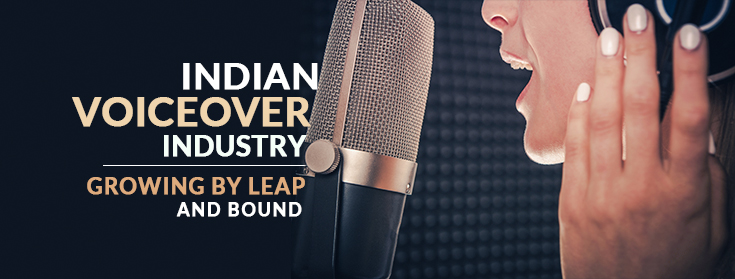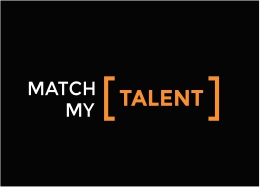On June 10, 2021, CEO and Co-Founder of Match My [Talent], Sonia Swaroop Choksi, played host to four veritable masters of the Indian Audio Content industry- namely Sonal Kaushal, majorly known as the voice of Doraemon in India, Gurdip Wadhwa Sial and Anita Naidu, founders of G-Corp Media, which is a prominent audio localization company based in Mumbai, and Varoon Indalkar, a passionate localization expert as well as animator, who has carved out a niche market for himself in both India and Vietnam.
From discussing new trends in the voiceover industry to dissecting the differences in original voiceover and dubbing, these amazing voice-preneurs made one thing abundantly clear….
The Indian audio content and localization industry is growing by leaps and bounds. In fact, due to the multitude of languages in this colorfully diverse country, there are more job opportunities and scope for growth in this industry now than in any other growth industry at any point of time.
According to Outlook India, “A fresher can earn Rs 300-500 per hour for dubbing and a more experienced person Rs 5,000-7,000 an hour. It can even be Rs 30,000 for a whole feature. Stalwarts may even charge Rs 10,000 for a unit (around 10 minutes). Voice-overs for e-books and presentations pay Rs 250-500 an hour.”
Take G-Corp, for example. Apart from providing audio localization services like translation, dubbing, original voiceover, writing, subtitling, etc. this agile venture has also forayed into voice coaching. G-Corp Media coaches kids as young as 8 years old in workshops demonstrating the processes involved in RJing and hosting podcasts, as well as training them in Audacity, the sound editing software. Their volume of work comes from IVR recordings, audiobooks, chatbox voice support, advertisement voiceovers and content dubbing across languages.
“Opportunities are endless. All that is required is willingness.” says Sonal Kaushal, who has been a major voiceover artist in indian animation, ever since she was a little 8 year old. Today, she is a 30 year old successful voice-preneur, happily married and sweetly nicknamed ‘Motormouth’.
Her long career has given her the skills of voicing different characters, whether it be original characters, or dubbing for different characters. “The key difference between them both is that, to be a good dubbing artist, you need to be a good copycat. You don’t have to think a lot, just try mimicking the voice quality that you hear, and you’re set. But when it comes to original characterizations, having the brief before you is very important. You need to discuss with writers and creators how the character is designed.
While dubbing may not particularly require a lot of understanding of the character and preliminary discussions, it is definitely more challenging than voiceover for original content. While dubbing, you have to remember lines, watch the video while reciting them, sync your dialogues with the dialogues of the other on screen, swiftly change your voice when the scene requires it, etc,” says Kaushal.
Even then, in original animation, it takes time to understand and therefore define a character from your end. You can only understand it completely when you have seen that character play out on screen for a good portion of the total runtime. That’s when you can better define that character.”
Not only is voiceover a lucrative profession right now, it is also relatively easier to start a career in it. “People sometimes think that their voice is not good enough for a voice actor. I’m here to tell you that that is a myth. There is no good or bad voice. Everyone has a unique voice, and every kind of voice has a space in voiceover work. Of course, you need to master voice modulation, but that is something that one masters over time anyway.
Same goes for language. “Someone randomly asked me to speak a few lines of Doraemon in Punjabi and filmed me doing it. In a couple of days that video got viral. So you see, every language has an audience,” according to Kaushal.
If you think that you should be satisfied by your work, well, that almost never happens. “Especially if you go back and look at the first few projects that you did, it is guaranteed to look pathetic. Any creative job always has room for improvement, and so does voiceover work.” says Kaushal.
Gurdip Wadhwa Sial, Founder of G-Corp media, wholeheartedly agrees. Just like the film industry, casting is an important process in the voiceover industry too. And where there is casting, there is rejection. Don’t be disappointed by rejection. It is very much a part and parcel of the journey.
In fact, rejection is the best way to hone your dubbing skills. Rejection gives one the motivation to take on more characters. There is absolutely no limit to how many voice characters you can impersonate. “As a voice artist it is very important to bring harmony in pitch, tone and tempo. More the gigs, the more you learn to master it.” says Gurdip.
There is no dearth of gigs too. “There is so much scope for work in this industry today. Voice artists are constantly required across all mediums, whether it be Radio, tv or digital,” according to Sial, who quit her 9 to 5 bank job to become a full time voice actor, and today runs an immensely successful business that she carved out of her love for voice acting.
And holding her hand through all ups and downs is Anita Naidu, a skilled and sought- after voicepreneur and voice-coach, who had discovered her love for voiceover through Radio.
For other people, voice is just a trait. But if you identify its potential, it can become your second identity. Today there are innumerable opportunities in the Voiceover industry. And the best part- you can do it all your life. “There is no retirement age in voiceover work,” says Anita Naidu.
Indeed there are innumerable opportunities for Voiceover artists. But the best place for it is animation, of course. Varoon Indalkar, a successful animator as well as a voice artist, has done some truly amazing work in the fields of animation as well as voice acting. Have you seen ‘Frozen’ in Marathi? Well, Varoon, who loves dubbing foreign content for local audiences, created a Marathi version of the hit Disney movie and uploaded it to Youtube, which instantly became a hit.
As a voice actor with deep knowledge on the processes involved in original animation, Varoon explained that sometimes the animation is adjusted to match the voice too. “Once, I was assigned casting voice actors for a role for a project, for which I had also done the animation. The role was of a german-speaking voice over actor, who could also speak French, but in a German accent. It was a peculiar requirement, and after lots of auditions, we finally found a guy that fulfilled our criteria. But there were still some differences between him and the character that we had created, so I went back and tweaked the animation to suit his character.
So, the bottom line is, today, content, no matter the place or language of creation, can be enjoyed by any audience. Language is no longer a barrier. Which is why the scope of career and growth for a voice actor is greater than you think. “If you think that a certain content is good only in the original language, you are missing out on so much.
Dubbing industry is flourishing in india due to the unimaginable number of languages which leads to innumerable localization needs
For us voice-preneurs in India, the diversity of our country is truly a boon, the more the number of languages translates to that much volume of work,” says Anita Naidu.
So, all you aspiring voice actors out there, grab that mic and start talking!








